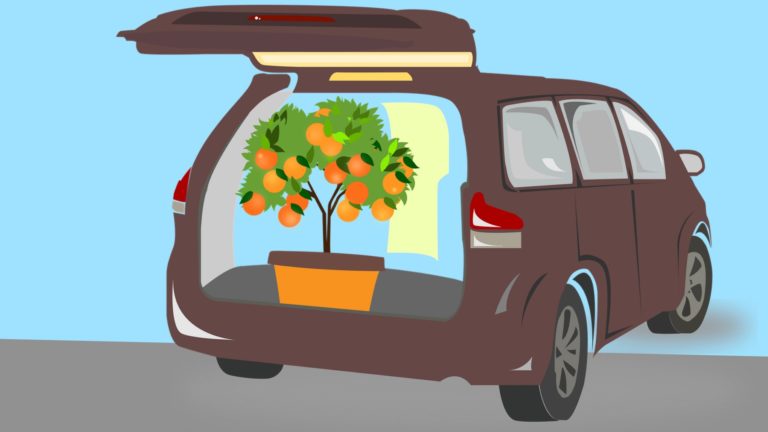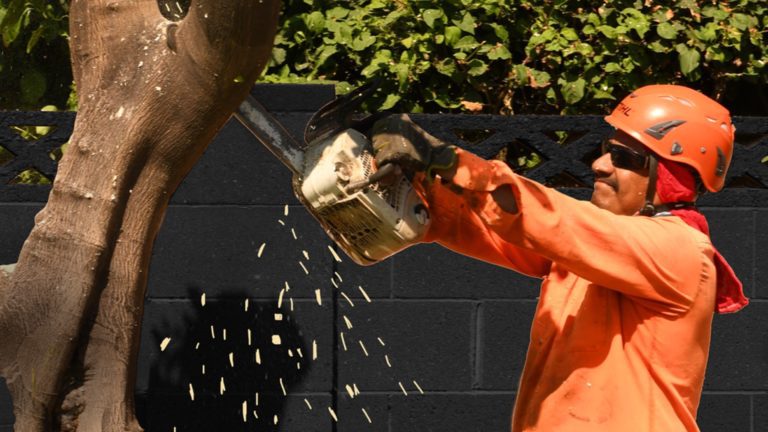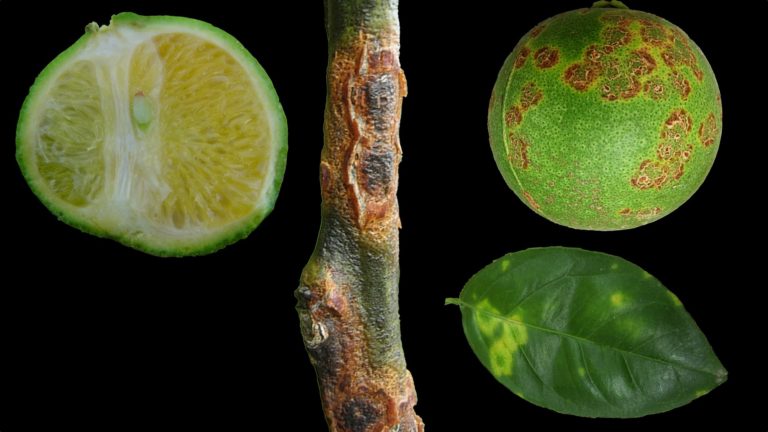How Does Citrus Greening Spread so Rapidly?

I recently visited the University of California, Davis in response to a reader's question about the rapid spread of huanglongbing disease (also know as citrus greening, HLB, or yellow dragon disease). Plant disease epidemiologist Dr. Neil McRoberts, a member of faculty at the plant pathology department at UC Davis, explains in the below video how the interaction between Asian citrus psyllids, liberibacter, and citrus trees causes this deadly citrus disease to spread so rapidly.
Please see below for resources related to huanglongbing and Asian citrus psyllids.
Resources
University of California Agriculture and Natural Resources
UC Cooperative Extension
UC Master Gardener Program
How is HLB spreading, and why does it appear to be spreading so rapidly?
The important thing to understand about HLB, the disease huanglongbing, or citrus greening, is that it is the result of interactions between three organisms, if we leave out the people. We are going to leave out the people mainly for today. So first thing is, there's an insect, the Asian citrus psyllid, ACP, that spreads the pathogen that causes the disease around. So we've got an insect, which I'm really bad at drawing. It kind of sits like that on the leaf. When it's feeding, it's with its nose down. So this is the Asian citrus psyllid, and the Asian citrus psyllid, or ACP, as it gets referred to, is the vector for the disease. This is the thing that spreads it around. And then of course we've got our citrus trees that we're interested in growing. And this thing only matters because we want to grow citrus, because it's delicious and healthy and good for us, so we have our citrus trees. The disease that kills the citrus trees is caused by a microscopic bacterium, so I'm gonna draw it like we could see it, but we can't see it. A little rod-shaped bacterium called Liberibacter, and what happens is that that the psyllids, the ACP, they carry the Liberibacter around inside them. When they land on the new flush of growth of the citrus when it flushes and produces little tiny leaves that are gonna be the next generation of leaves on the plant, that's when the psyllids can lay their eggs, and the nymphs can feed on that young, soft tissue. And during that feeding process, that's when the psyllids introduce the bacterium into the plant, and it's the presence of the bacterium in the plant that causes the plant to get sick. Part of the reason why this disease spreads so quickly is because every time the psyllids reproduce and produce more psyllids, they spread the disease to their offspring. Because at the local sites on the leaves, where the psyllids are feeding, the nymphs pick up the bacterium locally from their parents, from their mothers. So if a mother is heavily infected, when she feeds locally on a leaf, in around that feeding site, the nymphs that feed there, they pick up the bacterium. And psyllids breed really quickly. They're tiny, little insects, and they breed really fast when it's warm, and so the generation time to get from one infected generation to the next generation is really short, about three to four weeks in California in the summertime. And a female psyllid, over the course of her lifetime, she lives for about a month under California conditions, she'll lay anything up to 600 eggs in her lifetime. So you can imagine, even if only a fraction of those successfully pick up the bacterium from the plant, then you've got a massive multiplication rate of the bacterium, just every time the psyllids reproduce. That's one thing that's driving the epidemic. The other thing that drives the epidemic is that the bacterium is strange for pathogens in the world in that it reproduces, it multiplies itself inside the vector and inside the plant. So this is a little bacterium that has learned the trick of using both the insect and the plant as a way of multiplying itself. So we've got multiplication going on when the psyllids multiply, and we've got multiplication of the bacterium going on inside each psyllid, once it becomes infected. And those two processes are what drives the rapid spread of the disease through the environment. So lots of local feeding, just one or two isolated spots on each tree. Where the psyllids are feeding, the bacteria are multiplying. They're multiplying in the insects. The insects fly away, and they go to another tree. If enough of those infection events happen on a tree, eventually the tree becomes unable to defend itself, and the bacteria will break through the resistance barriers, and they'll colonize the whole tree. And that can happen long before you see any symptoms in the tree. The tree can look as if it's perfectly healthy but actually be infected by the bacteria. And then once the bacteria are systemically spread all the way through the tree, so they start in the leaves and they work their way down, and they infect the roots. And the roots get damaged pretty badly, pretty quickly, but still the tree, if it's well-watered and well-fed, might not show any really obvious symptoms above ground. And then once they've spent some time in the roots, the bacteria are able to systemically infect all the way through the tree. And now, when more psyllids come to feed, as well as bringing their own doses of the bacteria with them, now they can also acquire, pick up, the bacterium from the tree. So eventually, after a few months, perhaps a year or so, once a tree's infected, the trees start to contribute to the disease, as well. So now we've got three lots of multiplication going on. There's the multiplication by the insects, spreading the bacterium from generation to generation on a monthly basis. There's the multiplication of the bacterium inside the insect, so the population of insects is becoming more contaminated. And there's multiplication of the bacterium inside the trees, as well. And you can just by thinking about the size of a tree compared with the size of an insect that's almost too small to see with the naked eye, you can imagine once the trees get to this stage, and they start to produce inoculum, they start to contribute bacteria. Then things really get hot. Then things really start to take off. So a combination of a very rapidly breeding insect, a pathogen that can multiply inside its vector, and inside its host plant, and the fact that the trees can be badly infected before they show any signs of infection, all of those things together lead to a disease that spreads very quickly through an environment. And because the trees can be invisibly infected, if you like, it's hard to find them, the infected ones, and get them out of the environment. So it's hard to get this bit of the inoculum out of the environment. The program in California is doing its best, and so far, seven to eight years after the disease was first detected in California, the program has successfully kept the disease confined to the urban environment in southern California. We still don't have any infected trees that we know about in commercial citrus. And compared with how much the disease has spread elsewhere in the world, that's a major achievement. So although we're still seeing the disease spread, we are getting better at finding it, and we know, or at least we're confident that the program is having some impact and buying the citrus industry enough time so that long-term solutions can be put in place, like breeding programs to produce resistant varieties. But in a nutshell, it spreads so quickly because it's hard to find, and it multiplies really fast, and it's piggybacking on the back of an insect that spreads very quickly through the environment. The psyllids can fly a mile or two under their own steam, easily, but they're also so small that they get picked up and moved around by the wind, as well. And sometimes they piggyback, they hitchhike rides on truckloads of fruit or in bags that people use for picking fruit. There's a lot of different ways that they can spread around in the environment. So they quickly colonized the southern end of California, but we're managing to keep them in abeyance from spreading any further at the moment.
Funding
This article was funded by a grant from California’s Citrus Research Board.






